I always thought it was interesting to see how an equalizer (EQ) would affect what I was listening to. Your childhood boom box was probably the first place you experimented with different EQ settings. They would usually have some preset EQ settings like Rock, Classical and Jazz. You can find these preset EQ’s on an older receiver as well, but for the most part, modern receivers are set to a flat response to allow the true voice of the speaker to shine.
Stock car stereos likely have two knobs that allow you to change the bass and the treble. That’s an example of a two-band equalizer; you can control two parts of the frequency spectrum. If it has three knobs for bass, mids and treble, that is considered a three-band EQ. If you upgrade from the stock stereo, you probably had more in depth graphical display which allows you control over the high-pass filters (HPF), low-pass filters (LPF) and possibly even notch out a particular range that will be affected while boosting or cutting frequencies.
There are different types of equalizers and frequency filters. Simple equalizers only allow control of volume to a specific frequency band. These are fixed EQ’s where the frequency is pre-set by the manufacturer. Typically bass is set to 100Hz, mids set to 1kHz and highs at 10kHz. A variation of a fixed EQ is the Graphic EQ, where the spectrum is divided into more than 5 bands. The frequency is pre-set and the volume controlled by a slider rather than a knob. An example of a Graphic EQ can be found in iTunes, Media Player or the EQ within your receiver.
The more sophisticated EQ’s allow you to choose the frequency that you want to boost or cut. These types use two knobs, one for selecting the frequency and the other to adjust gain. These types are referred to as semi-parametric EQ’s. To get more precise control, you can adjust the amount of surrounding frequencies that will be affected. This parameter is called
- - - - - - - - - - - - - - - - - - - - - - - - - - - - - - - - - - - - - - - - - - - - - - - - - - - - - - - - - - - - - - - -
Q
… for quality. The higher the Q value, the less surround frequencies will be affected while the lower the Q value, the more surround frequencies will be affected. These types of EQ’s are called parametric.
An EQ will adjust the balance in your audio signal that will allow you to boost or cut certain frequencies, essentially volume control for bass (lows), mids or treble (highs).
Let’s start with the different types of filters as these have the most drastic effect on any sound.
- - - - - - - - - - - - - - - - - - - - - - - - - - - - - - - - - - - - - - - - - - - - - - - - - - - - - - - - - - - - - - - -
Filters
Filters are processors that reduce the volume of specific frequencies of the audio signal. During recording sessions filters are mostly used in order to minimize unwanted noise and sounds in an audio signal. For example, high-pass filters are commonly used on cymbal and hi-hat microphones in order to minimize sound from the bass drum. Low pass filters are used on low-frequency instruments like bass guitar; it can filter out string buzz or amp hiss. Band-pass filters are used for creating the “telephone” sound on vocals or dialog. The notch filter would be used to reduce specific noises within the mid-frequency range.
Roll-off
Roll-off refers to how quickly the selected frequency will decline to a non-audible level. The effectiveness of a filters roll-off is measured in the amount of volume they are going to reduce for every octave away from the selected starting point. If a high-pass filter has a 12 dB per octave slope and is set to reduce all frequencies below 200Hz, that means at 100Hz (one octave below 200Hz) will be reduce by 12dB, 50Hz (two octaves below 200Hz) will be reduced by 24dB and 25Hz (three octaves below 200Hz) will be reduced by 36dB and so on.
There are four categories of filters:
High-Pass Filter
(aka Low-Cut Filters) – filters that reduce the volume of all frequencies below the set frequency. Mostly used to eliminate unwanted low-end rumble.
Low-Pass Filter
(aka High-Cut Filters) – filters that reduce the volume of all frequencies above the set frequency. Mostly used to eliminate wanted high-end hiss.
Band-Pass Filter
– filters that reduce the volume of all frequencies, except for a set range of frequencies. In other words, using a high-pass filter and low-pass filter simultaneously.
Band-Reject
Filter (aka Notch or Comb filters) – filters that cut only one range of frequencies.
All of these filters are used throughout the mixing process for both movies and music.
Filters can also be used in a tasteful creative fashion for songwriting or a particular scene of a film. If you want to familiarize yourself with how filters have an effect on music, check out Daft Punk’s early albums; Homework, Discovery and Human After All. Almost every song uses a filter of some sort. Most of the intros have a combination of high-pass and low-pass filters on the instruments. This builds up a suspenseful intro until the whole song kicks in; once they release the filters, the full frequency spectrum kicks in and the song is rockin’. They also utilize the band-pass filter on vocals often which gives it the digitized, telephone-like sound.
Here are examples of how each of these filters would be used:
High-Pass Filter
Typically these are used to help eliminate low-frequency rumbles, like an air-conditioning hum, while recording dialog. This technique is also used during the mixing process to make room for the low frequency sounds. Check out this example of a HPF on a piano to make room for the bass starting at 1:30 in:
Low-Pass Filter
Did you know that lightbulbs emit a high-frequency static-type sound? We tend not to notice in our everyday lives, but once you put a mic in the room it becomes very clear. Same goes for a bass guitar; to get rid of string buzzing you would roll-off the high hissing frequencies with a low-pass filter. It’s also effective when you need a sound to feel like it’s coming from the room next to you. For example, skip to 2:20 into this mixing technique:
Band-Pass Filter
Did you ever wonder how voices were able to get the “telephone/radio” effect? It is a combination of both the high and low pass filters. By dropping the bass and treble, it isolates the mid-range frequencies and sounds like a telephone or small radio. This is done nicely in the intro to the first Iron Man movie with “Back in Black” by AC/DC. The filter happens at 20-22 seconds in and you can see the clip here:
Band-Reject (Notch) Filter
The most common use of this filter is on kick drums of recordings from rock to dance music. People are often surprised to hear a kick drum in real life because their perception of the sound is built upon the records they know. Essentially most recordings will scoop out the mid-range, leaving only the deep bass thud and the high frequency slap of the drum head. With the mid-range scooped out, that leaves plenty of room for the rest of the instruments to sit well in the mix.
I’ll share two examples to grasp a better understanding of this concept.
This first video visually shows how the notch affects the tone of a kick drum. He notches out the mid frequencies which make the drum sound hollow. He explains this starting at 1:55 in:
In a song called “Chlorpromazine” by The Agonist, the kick drum mid-scoop effect is illustrated clearly during the interlude, particularly right at 3:04-3:06 of the song; you can hear the difference of the natural resonant drums compared to the fully processed drums. Listen here:
Graphic EQ
Graphic EQ’s are the most popular among consumer audio equipment or media player. They’re very simple to use and you can quickly adjust frequency bands of bass, mid or treble. A car might have 3 bands (bass, mid treble) while a computer software like iTunes will have 10 bands. A more professional graphic EQ would have control of up to 31 bands, allowing a tighter control of the frequency ranges.
Parametric EQ
Parametric EQ’s have more detailed control of the graphic eq. Not only can you adjust the volume of the frequencies, you can choose the center frequency and the bandwidth (Q). These are effective while mixing a record or for live shows. You can precisely get the proper tone balance between the instruments. It’s especially helpful for multiple vocalists in blending their unique voice. The Q is also used in a Band-Reject filter and helps determine how wide the scoop or boost there will be.
Shelf EQ
Shelf EQ’s allow you boost frequencies above or below a specified point. If you look at this type of EQ on a graph, it looks like a shelf. For example if you’re using a low shelf, you could set your frequency to 200 Hz and everything below that would be boosted or lowered. These types of EQ’s can be used if the recorded sound was unbalanced. If you recorded the sound of waves crashing on the beach and need more of the high frequency “crash” sound, you could set your frequency to about 1kHz, boost everything above that point by a few decibels and you increase the clarity of the crash. If you wanted more of the low frequency rumble for the incoming wave, you could set the frequency point to maybe 500 Hz and boost everything below that point by a few decibels.
This may seem like an oversized chunk of information in regards to home theater. However it can help you to understand what you’re doing if you feel you need to make adjustments within your system. If you felt you needed more clarity from your center channel for dialog, you would start by raising all frequencies above 1kHz by maybe two or three decibels. Or if you felt like your surround speakers could use some more sparkle or spaciousness, you would raise all frequencies starting from about 10kHz and above.
Depending on the speakers, you may or may not need, or even want to make changes to the EQ. Although each speaker is slightly affected by the coloration of the processor and amps you choose, the voice of the speaker is specifically designed by each company’s sound engineers. Some are voiced to boost or cut certain frequencies, while others are trying to obtain the most neutral and stable frequency spectrum as possible. Some people prefer a speaker that is sonically neutral; others can’t stand it and just want their bass and treble. But, if you’ve had a set of speakers for years and want to experiment with the EQ settings, it’s possible you’ll discover a way to make your speaker sound brand new!

Complete Your Sound System Solution

Sign up for our newsletter below, and join our social media groups to stay up to date with the latest news and information from Aperion Audio!
 |
 |
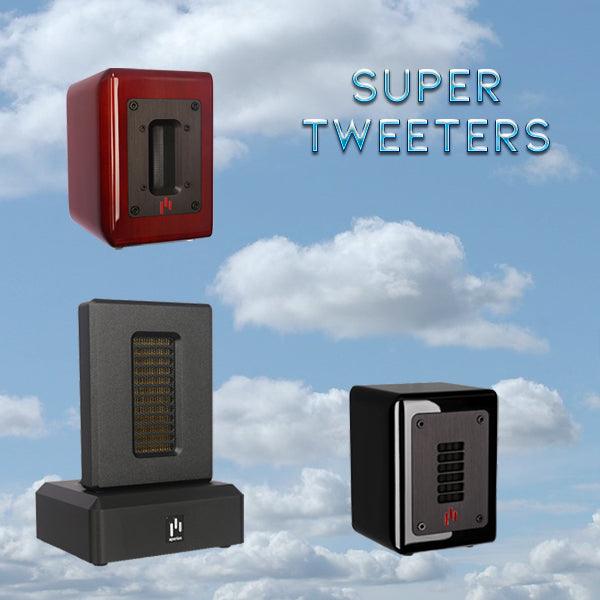

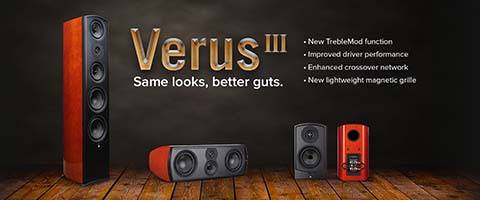
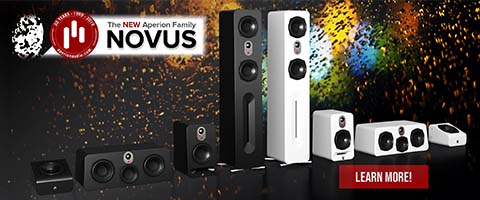

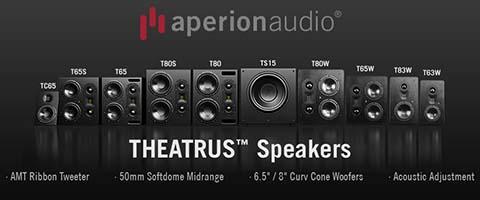

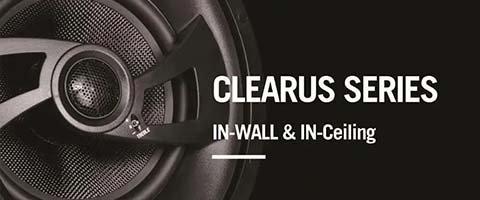
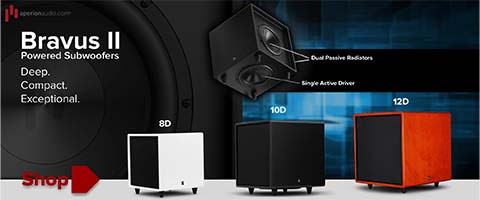
 https://www.aperionaudio.com
https://www.aperionaudio.com